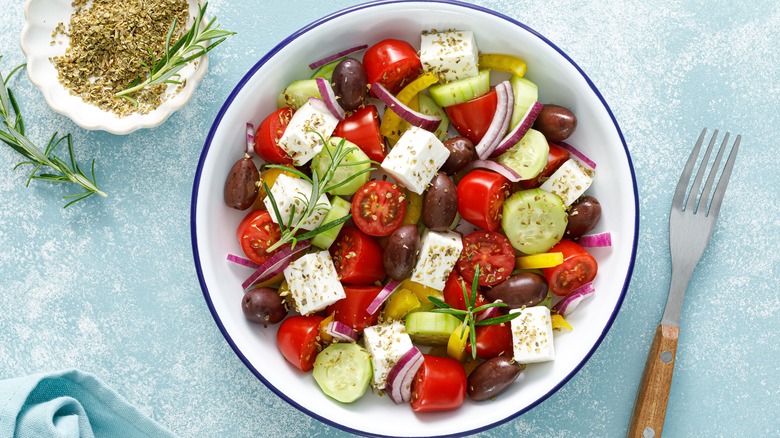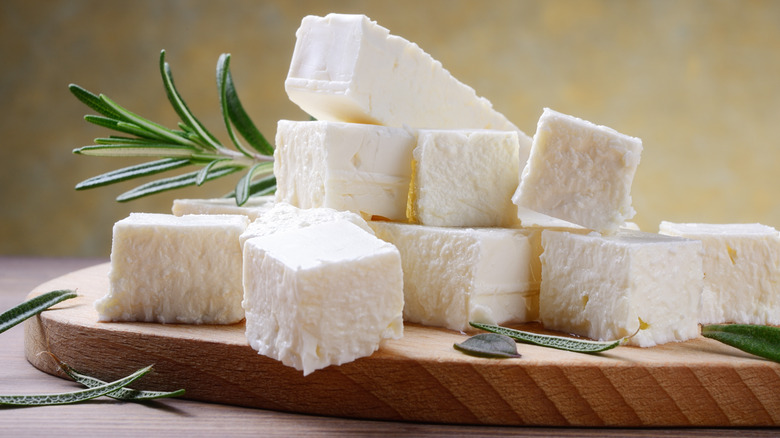The Secret To Utterly Craveable Greek Salad Is Way More Feta
Making Greek salad is easy, but making a good Greek salad, that's another story. Despite that recipes may vary, the dish generally consists of ripe tomatoes, cool cucumbers, zesty onions, earthy olives, and briny feta all dressed in a tangy vinaigrette. With so few ingredients, selecting the highest quality products is important — and knowing how to use them is just as essential. The reality is that when it comes to achieving a more flavorful salad, the answer might be as simple as rethinking how to use your ingredients, especially feta.
Less is more, except when it's not. In the case of Greek salad, a better-tasting result is a matter of adding more feta. However, rather than tossing in feta by the fistful, use the cheese in a more effective way by mixing it directly into the dressing. By changing the way you incorporate the cheese, you enhance enjoyment as you guarantee every bite will be full of creamy and tangy goodness.
All you need to do, according to Instagram's Eating With Emily, is mash half of the required feta in a bowl before mixing it with a splash of lemon, red wine vinegar, and a drizzle of olive oil. Then, go about building the rest of your salad, before finishing with the remaining bits of feta.
The details matter when making a mouth-watering Greek salad
First things first, find a feta that's fit for Greek salad. Contrary to what you might have thought, there isn't just one kind as textures and flavors can differ depending on how and where the cheese is made. That said, we recommend opting for traditional Greek feta that's packed in brine and bears a PDO label since this authentic sheep's milk cheese has a finer, creamier texture and a wonderful tang that's perfect in Greek salad.
Additionally, what makes the recipe shared by Eating With Emily so unique is that it also leans heavily into fresh herbs like dill. Grassy and herbaceous, dill's menthol-like undertones give the salad a fresh feel that compliments the vegetal green peppers and juicy cukes, yet juxtaposes the sweet tomatoes and decadently salt-kissed feta in a cohesive way.
Of course, properly prepping the ingredients also makes a difference. Just like how mashing feta into the base of the salad's dressing will make for a more balanced bite — and so will chopping ingredients into similarly sized pieces. Circling back to feta, this means that rather than using crumbled cheese in the salad, working with blocks can give you a better handle on size. With the knowledge of how to maximize every ingredient to its full potential, your next Greek salad will improve tenfold.

